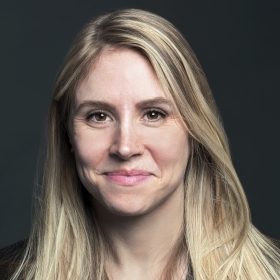Is stretching an integral part of a writing course? For students in Writing 177: Physical Activity and Cognition the answer was, “Of course!”

Photo by Richard Howard
Is stretching an integral part of a writing course? For students in Writing 177: Physical Activity and Cognition, offered for the first time last semester, the answer was, “Of course!”
The five-minute stretching session, which happened midway through the twice-weekly class, was a vivid reminder of some of the lessons students were learning about the relationship between exercise, academic performance, and overall well-being. It also demonstrated how team-taught courses can enrich students’ experience by combining different subjects in useful yet unexpected ways.
Writing 177 was taught by Connie Bauman, professor of the practice in the Department of Physical Education, Recreation, and Athletics, and Jeannine Johnson, director of the Writing Program and a lecturer in writing. Students read and wrote about the history of exercise at Wellesley and other colleges; what research shows about the effects of exercise and mindfulness practices; and how exercise affects public health and well-being. The first-years also attended a weekly physical-education lab, where they did seven-minute workouts, yoga and mindfulness meditations, and monitored their physical activity using Fitbits and iPads.
The interdisciplinary approach reinforced the idea that exercise and writing involve skills that must be developed and practiced. “This course focuses on the ‘whole’ student—developing both the physical and intellectual self,” Bauman says.
Writing 177 was one of four team-taught courses during the fall 2016 semester. The College has encouraged such courses, offering grants to faculty teams developing them.
“The idea is to give faculty the freedom and encouragement to bring new, interdisciplinary fields of study into Wellesley’s curriculum,” says Assistant Professor of History Kate Grandjean, who chairs the committee that administers the grants. “Team-taught courses expose our students to emerging ways of thinking.”
